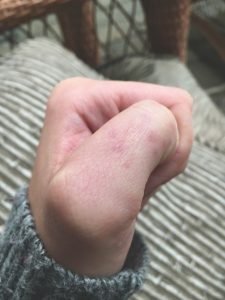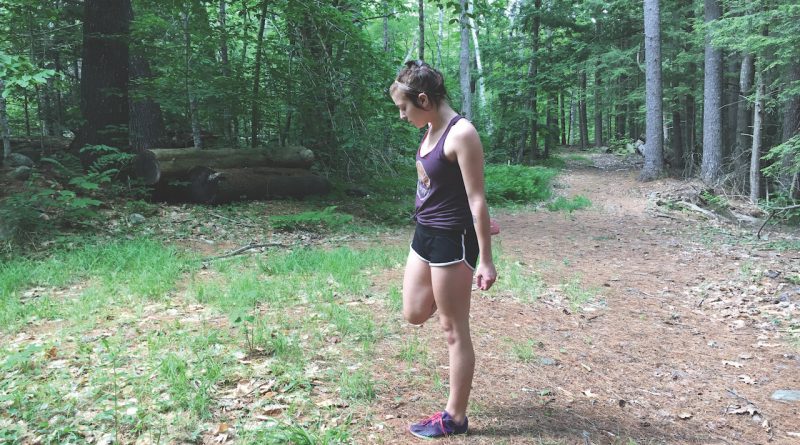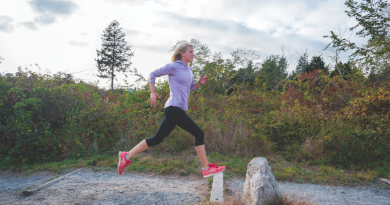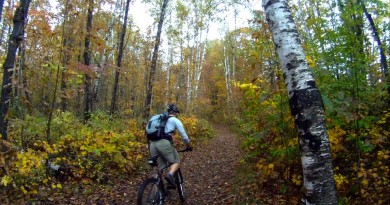Attacked By A Rabid Raccoon
I’ve been running along an old logging trail near my house in Maine every summer for the past few years. The trail runs from the edge of my road to Alford Lake, where it becomes significantly narrower as it hugs the winding shoreline. The trail is frequented by a variety of native wildlife, judging from the evidence: deer pellets, beaver-whittled logs, duck feathers, porcupine quills, and the odd whiff of skunk, as well as a myriad of footprints: squirrels, chipmunks, raccoons, coyotes, foxes, rabbits, possums. One night, when my family was camping in a clearing on the trail, my mom unzipped our tent and spotted a moose standing outside.
Still, for over a decade, a moose incident was the only direct encounter I had with a wild animal along that trail. That all changed suddenly, at around five o’clock in the afternoon on June 3, when I was attacked by a rabid raccoon a quarter of a mile away from my home.
Yes, you read that right.
I saw the raccoon bounding towards me out of the brambles, teeth bared. It took me a moment to process what I was seeing. It looked cartoonish at first, and seemed so odd, so unlikely, I thought I must be hallucinating. But there it was, right in front of me, and I became immediately aware of two things.
One: without question, the animal was rabid. Raccoons are generally not aggressive–they tend to shy away from humans, and I had done nothing to provoke this one.
Two: judging by the speed and angle from which it came charging at me, snarling, teeth fully exposed, I knew that it was absolutely determined to bite me–and that there was little I could do to prevent that from happening.
In that moment, I knew I couldn’t run away if I wanted to; perhaps the only thing worse than being faced  with a surprise attack by a charging raccoon would be to be attacked from behind. Furthermore, being small and able to sprint through dense brush and under logs that I would inevitably trip over at the same speed, the raccoon had a clear and definite advantage. At short distances, raccoons, like many small forest creatures, can run remarkably fast (up to 15 miles per hour).
with a surprise attack by a charging raccoon would be to be attacked from behind. Furthermore, being small and able to sprint through dense brush and under logs that I would inevitably trip over at the same speed, the raccoon had a clear and definite advantage. At short distances, raccoons, like many small forest creatures, can run remarkably fast (up to 15 miles per hour).
By the time I had registered what was happening, and determined that running was not an option, the raccoon was already at my feet. I screamed; I ripped my headphones out and threw my phone to the ground, so as to have both hands free.
I tried to kick it away, but the raccoon was so small and fast, and the brush so dense, that even if I had punted it with all my strength, the critter probably wouldn’t have gone very far.
(Later, I saw security camera footage of another Mainer being attacked by a most-likely-rabid fox; the clip shows him hurtling the fox across the road, where it skids a few feet, only to come running right back at him, undeterred. I’m telling you, rabid animals are, quite literally, insane. I’m not sure if pain is something they are even aware of.)
Whatever I did, screaming, kicking, throwing my phone down, only seemed to aggravate the animal more, and I was out of ideas. If I tried to run, it most surely would have caught me; if I held my ground, it would probably attack my legs.
So I did what made the most sense in the split-second of decision-making time I had: acting on impulse, I put my hands out in front of me – to defend myself, to contain the animal, to gain some semblance of control over a situation where I had almost no control whatsoever. I hadn’t yet figured out what I was going to do beyond that.
 That’s when the raccoon attacked, sinking its razor-sharp teeth into my left thumb. I cried out in pain. With my other hand, I tried to pry its jaws apart, but it opened its jaw only long enough to clamp down again, catching the tip of my right ring finger, which its fang pierced, straight through my nail bed.
That’s when the raccoon attacked, sinking its razor-sharp teeth into my left thumb. I cried out in pain. With my other hand, I tried to pry its jaws apart, but it opened its jaw only long enough to clamp down again, catching the tip of my right ring finger, which its fang pierced, straight through my nail bed.
Crying with pain, I managed to free my ring finger, but my other thumb remained in the raccoon’s grasp. (Rabid animals are strong. You can’t fathom just how strong until you run into one. But that’s not an advisable course of action, so it’s better to just take my word for it.)
By now, I was in a state of total hysteria. The raccoon was lying belly-up on the ground, its teeth fully embedded in my thumb, clutching my hand in its paws the way otters sometimes float belly-up while clutching a piece of seafood. My other hand was restraining it, holding its mangy body against the ground, lest it spring up and try to bite me again elsewhere. I frantically looked around me, searching for something I could use, some idea – any idea – what to do next. My eyes landed on my phone, half-submerged in a nearby puddle. Oh, great, I remember thinking at first, as if this situation could get any worse, now my phone will be ruined.
Just then, a solution hit me: The spot where I was kneeling, after a couple days’ worth of rain, was more swamp than trail. There may have only been a few inches of water on the ground, but if it was enough to “drown” my phone, it had to be enough to drown the raccoon – it had to, as I was desperate.
Out of nowhere, unprovoked, the creature had attacked me. I was absolutely sure it had rabies. It wouldn’t let go of my thumb. I needed to get somewhere safe, and the animal needed to die.
So, veins pumping full of more adrenaline than I had yet experienced in my life, I took my right hand – my free hand – and forcefully plunged the creature’s head as far as I could into the muddy water.
The raccoon began to struggle wildly, thrashing and clawing at my arm, but I wasn’t letting go. Though the whole encounter happened in the blink of an eye, the minute or so I spent holding the poor beast underwater with my thumb in its mouth – shaking, crying, my own pulse throbbing as the raccoon’s pulse slowed – felt like an eternity.
Then it was over. The raccoon continued to struggle until the very last moment, desperately trying to free itself, biting down harder on my thumb before its arms finally went limp and slowly fell to the side. I finally felt its tiny jaw release. Its chest was still heaving slowly when I pulled my bloody hands away from its body, but it was clearly done fighting.
I stared at it for another second, processing what had just happened, before I started the frantic run back the way I came. Once a few feet away, I remember turning around to look back at it. I had to make absolutely sure it was dead, and would not spring out of its puddle and start chasing after me. You know in shows like The Walking Dead, when the hero temporarily stuns or blocks a zombie from attacking them, but knows they have only a few moments to get away before the zombie comes back to life and starts chasing them again? That’s what the run back home felt like – complete and utter terror, and paranoia.
By the time I was most of the way back up the main part of the trail near my house, I was hyperventilating, so I had to stop and rest my hands on my knees for a few moments. Realizing my shoes were soaked through with mud, I kicked them off so I could run faster. When I caught my breath, I scrambled across the stone bridge connecting the trail to my house, crying, bleeding and barefoot, and burst inside.
In the emergency room, I was given a total of six shots: four of the rabies vaccine, one of rabies immunoglobulin, and a tetanus shot – as precautions, since we didn’t know for sure yet if the animal was rabid. (Two days later, we received a call from the game warden who found the animal confirming that it had, in fact, tested positive for rabies.)
The rabies vaccine is nearly 100 percent effective when administered before the onset of symptoms, at which point the disease becomes untreatable, and almost always fatal. The symptoms typically take weeks or months to develop, but I’m nonetheless thankful that I was able to get vaccinated right away, just for my own peace of mind.
Tragically, not everyone in the world, especially those in the developing world, get to be so fortunate. It is estimated that more than 55,000 people around the world die annually from rabies, but not because the treatment isn’t effective: it’s usually because they simply cannot afford the life-saving vaccine.
In the United States, where widespread measures have been taken to prevent the spread of rabies, including mandatory vaccinations for household pets, the prevalence of rabies is much, much lower. In Vermont, for example, a total of 48 animals tested positive for rabies in 2016, according to Vermont Department of Health statistics. Raccoons, red and gray foxes, skunks, and bats, known as “rabies vector species,” are the primary carriers of rabies in the U.S.
While incidences of rabies in New England are generally low, several cautionary tales warn those existing near wooded and wild areas to be on guard. In 2012, a Massachusetts man died after contracting rabies from a bat bite. It was the state’s first reported rabies death since 1935.
This May, a rabid fox bit two residents in southern Vermont–including a 5-year-old boy. First, the fox bit Londonderry resident Bonnie Cobb. “I was texting my daughter, and the next thing I knew I had a fox attached to my leg,” she told the Bennington Banner. “It came out of nowhere. I never saw it until it was on me.”
About an hour later, the fox entered the backyard of Benjamin Priggen, who was playing wiffle ball with his 5-year-old son. The fox ran at the young boy, biting his belly. Priggen kicked it away, and after the kids were safely inside, hit the animal with a shovel, killing it. Both Cobb and Priggen’s son received treatment for rabies and were unaffected by the virus.
In Vermont, 21 animals (66 percent of which are raccoons) have tested positive for rabies in 2017, but none of these animals caused severe consequence for humans. Dogs and cats are much more likely to be attacked by these species than humans are. As a safeguard, the Centers for Disease Control recommend always keeping a distance from wild animals in general, especially those that appear to be sick or rabid; however, they don’t offer much advice beyond that.
 Maybe it was foolish of me to put my hands out, instinctively, to shield myself. Some might say that I was “asking for a bite.” But if I hadn’t, who knows where else the animal might have bitten me? Because rabies affects the central nervous system, the farther distance the virus must travel from the site of transmission (the bite) to reach the victim’s brain and spinal cord, the longer it will take to actually cause an infection. Therefore, one is much more likely to be infected if they are bitten on or near the head or neck, rather than the body’s extremities.
Maybe it was foolish of me to put my hands out, instinctively, to shield myself. Some might say that I was “asking for a bite.” But if I hadn’t, who knows where else the animal might have bitten me? Because rabies affects the central nervous system, the farther distance the virus must travel from the site of transmission (the bite) to reach the victim’s brain and spinal cord, the longer it will take to actually cause an infection. Therefore, one is much more likely to be infected if they are bitten on or near the head or neck, rather than the body’s extremities.
Some have criticized me for taking the life of an “innocent” animal without first receiving confirmation that the animal was afflicted with rabies, but I was almost certain that the animal was rabid from the moment I saw it, at which point it was already too late for me to flee or seek other forms of defense.
As I would soon learn, if I hadn’t taken its life right then and there, the animal would have succumbed to the virus and died within a few days anyway, but not before potentially attacking and infecting any number of other animals or humans in the area.
Prior to this ordeal I could never in a million years have imagined taking another being’s life, let alone with my bare hands. I’m an animal lover and vegetarian. I keep several pets, and have always considered them nothing less than members of the family in their own right. I don’t believe in animal testing, and I believe there is a special place in Hell for those who abuse animals. But I do believe in self-defense. I believe in a person’s right to do what they must to protect themselves and others when their safety is threatened, even if that entails harming – or even killing – the source of the threat.
If this experience has taught me anything, it’s not to underestimate my own strength and capability when dealing with a difficult situation.
To quote the ever-inspirational Leslie Knope (played by Amy Poehler) from the CBS sitcom Parks and Recreation, “The only way to defeat the beast is to find the beast within.” Having taken these words to heart, once confronted by the sudden threat of a literal beast in the woods, I was able to summon “the beast within,” just in time to do what needed to be done in order to defend myself. I guess I just never could have imagined a rabid raccoon as the beast I’d be up against.
Photos by Christopher Borch





Pingback: Raccoons, rabies and a follow up dental visit with Rachel Borch • Seasons of Smiles Dental - Arthur Norman Medina DDS